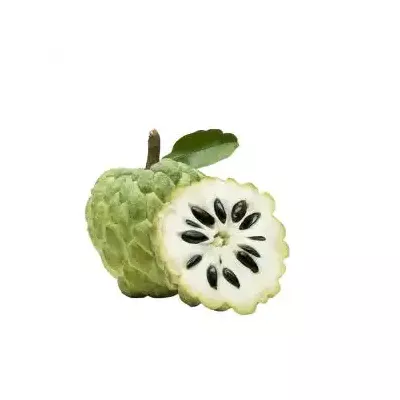



The sugar apple tree doesn't grow very tall, but has many branches. Sitaphal or sugar apple has a thick green outer skin and a very sweet white flesh inside.

Pay using UPI, Card or Netbanking

Shipping within 3 working days
Annona squamosa, commonly known as sugar apple or the sweetsop, is a tropical fruit tree native to South and Central America but grown in tropical and subtropical regions around the world. In India, it's known as sitaphal.
Annona squamosa is a small, deciduous tree that grows up to 8 metres high. Sugar apple thrives in warm and humid climates with well-drained, slightly acidic soils. The tree prefers full sun to partial shade and can grow in a variety of soils, including sandy, loamy and clayey soils.
The tree is relatively low maintenance and only needs moderate watering. It's also suitable for growing in containers.
Seedlings mature in 3–4 years time. Bud plants mature within 1-2 years. It is a good practice to prune the branches after harvest. This will create new branches which will bear fruits in the next year. Pruning can control its shape and size too.
Once established, it grows without much care. It is also draught tolerant.
The fruit of the Annona squamosa is oval and usually has a diameter of 8-10 cm. It has a green, scaly skin covered with bumps and a creamy white flesh divided into segments containing black, shiny seeds. The fruit has a sweet, creamy and slightly sour taste and custard-like consistency.
Sugar apple is usually eaten fresh or used in desserts, shakes and ice cream.
Sitaphal may be beneficial in alleviating coughs, fevers and digestive problems. Sitaphal is rich in nutrients such as vitamin C, fibre, potassium and magnesium.
Annona squamosa is an important tree in Ayurvedic medicine and is used to treat a variety of ailments. The leaves and bark of the Sitaphala tree contain bioactive compounds that boost body immunity and check diabetes.
In addition, the Seetaphal contain compounds that have been shown to have insecticidal properties and can be useful in pest control.
Data sheet